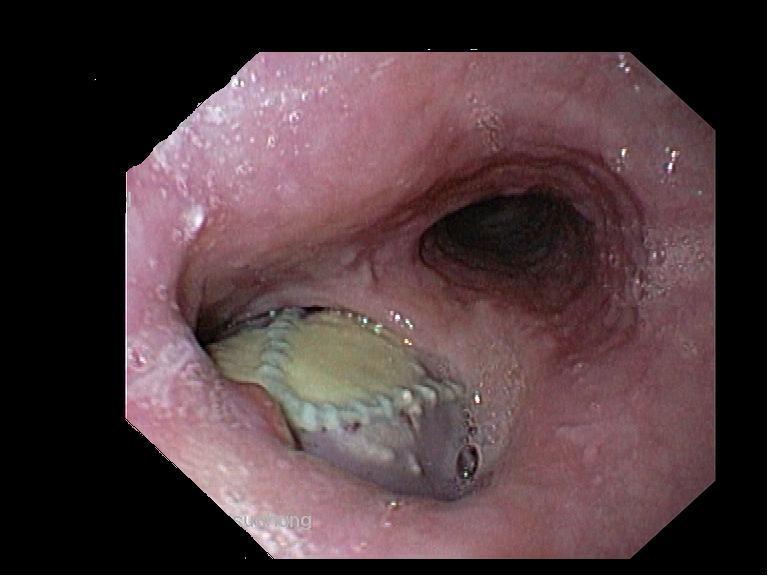|
Back to Annual Meeting Posters
Aortoesophageal Fistula After Thoracic Endovascular Aortic Repair
Renate Reinhardt1, Wolfgang Niebel1, Gernot M. Kaiser1, Alexander Dechene2, Andreas Paul1, Arzu Oezcelik*1
1Surgery, University of Essen, Essen, Germany; 2Gastroenterology and Hepatology, University of Essen, Essen, Germany
Introduction: The aortoesophageal fistula is a rare but devastating complication after thoracic endovascular aortic repair. There are no clear data in the literature about the optimal therapy of this complication. The aim of this study was to report the characteristics, therapy and outcomes of our patients with aortoesophageal fistula after endovascular aortic repair.
Patients and Methods: The records of all patients who underwent a thoracic endovascular aortic repair between 2004 and 2012 were reviewed. Patients readmitted to the hospital for aortoesophageal fistula were identified. The data about demographics, symptoms, clinical management, surgical or endoscopic therapy and follow-up were reported.
Results: Of the 268 patients who underwent a thoracic endovascular aortic repair, nine patients (3,4%), in a median age of 64 years (IQR 49-77), developed an aortoesophageal fistula after a median time of 2.4 month (IQR 1-16). The clinical symptom was sudden massive hematemesis in four patients, fever and elevated makers of inflammation in five patients and abdominal pain in one patient. Aortoesophageal fistula was identified by esophago-gastro-duodenoscopy. Of the nine patients, two patients (22%) underwent an esophagectomy with gastric pull-up, one patient an esophagectomy with a delayed colon interposition and the remaining six patients underwent an endoscopic implantation of a self-expanding esophageal stents. The two patients after esophagectomy and gastric pull-up are alive with a median survival of six and 12 month. The remaining seven patients all died due to fatal re-bleeding or mediastinitis in a median time of 12 month after the diagnosis of aortoesophageal fistula.
Conclusion: Aortoesophageal fistula is a fatal complication after thoracic endovascular aortic repair. Early diagnosis is essential for the survival of the patients. In our patient population was the surgical therapy associated with a better outcome.

Back to Annual Meeting Posters
|


